Shad spawning entering peak at Fairmount Fish Ladder
-
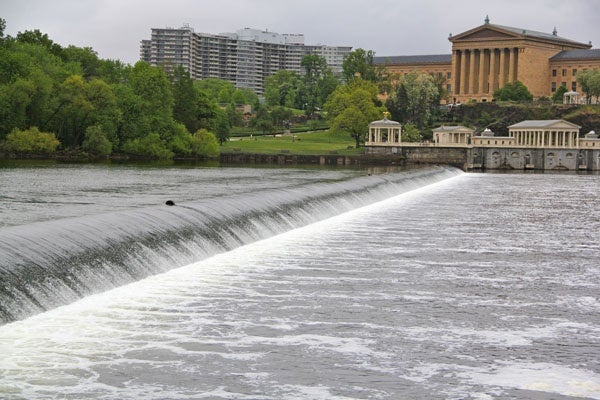
The Fairmount Dam is a barrier to fish who would swim upstream to spawn. The fish ladder allows them to complete their life cycle on the Schuylkill River. (Emma Lee/for NewsWorks)
-
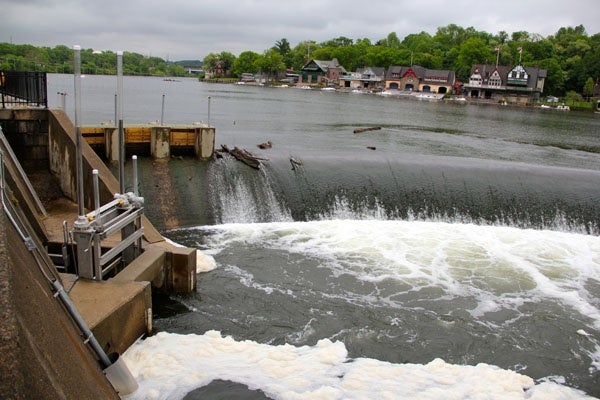
The entrance to the Fairmount Fish Way (left) leads to a labyrinth of chambers that allow fish to ascend gradually. (Emma Lee/for NewsWorks)
-
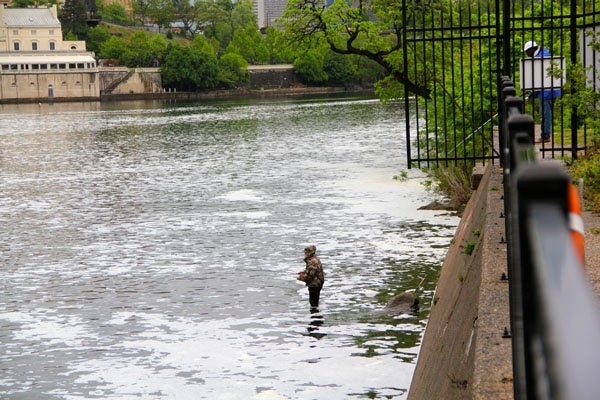
Fishermen try their luck in the Schuylkill near the Fairmount Dam. Fishing is prohibited within 100 feet of the fish ladder. (Emma Lee/for NewsWorks)
-
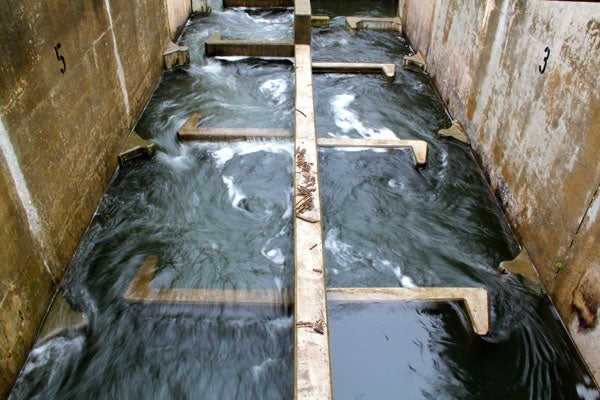
The Fairmount fish ladder is divided into chambers that allow fish like American shad to rise gradually to the water level above the dam. (Emma Lee/for NewsWorks)
-
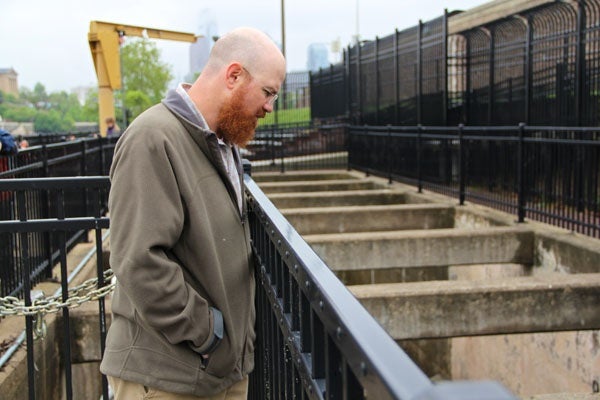
Fisheries biologist Joe Perillo looks for signs of migrating fish in the Fairmount fish ladder. (Emma Lee/for NewsWorks)
-
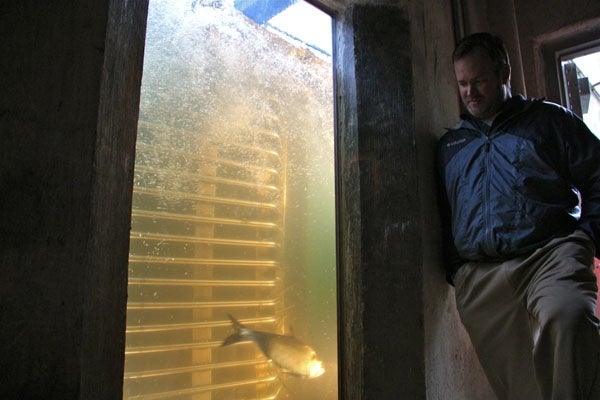
Aquatic biologist Lance Butler keeps an eye on the crowding window, where fish must pass to use the ladder. (Emma Lee/for NewsWorks)
-
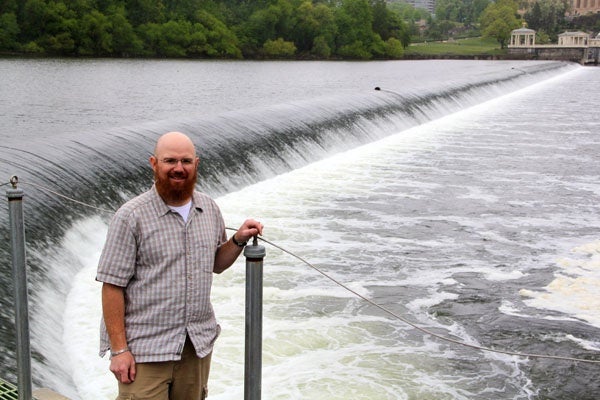
Fisheries biologist Joe Perillo stands above the Fairmount Dam. A nearby fish ladder helps fish such as the American shad reach their spawning grounds upriver. (Emma Lee/for NewsWorks)
-
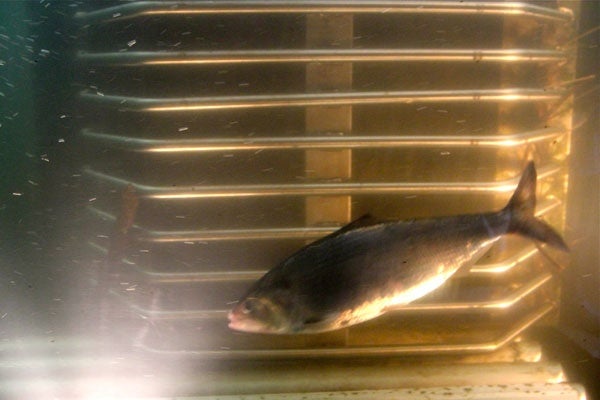
An American shad flickers by the crowding window at the Fairmount fish ladder. (Emma Lee/for NewsWorks)
-
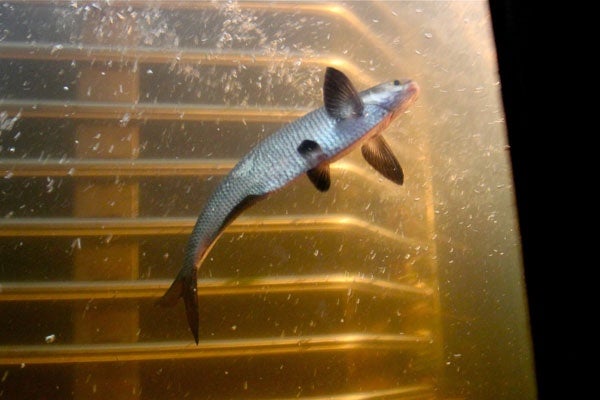
A gizzard shad uses a fish ladder to get past the Fairmount Dam on his way upstream to spawn. (Emma Lee/for NewsWorks)
It’s spring, which means it’s mating season for much of the animal kingdom and spawning time for the American shad.
Over the past decade, a duo of scientists in Philadelphia have been working to help restore a keystone species to the Schuylkill River.
Standing on the western bank of the Schuylkill River, across from Boathouse Row, Philadelphia Water Department aquatic biologist Joe Perillo’s passion for the American shad is obvious.
“The fish that are born here will travel thousands of miles,” Perillo said. “From the Atlantic Ocean as far north as Labrador and as far south as Florida. (They) eventually reach adulthood, and then when it’s time for them to spawn, out of thousands of miles of open ocean, bays, and rivers, they’ll find the river they were born in and start this amazing journey upriver.”
Historically, the shad traveled as far as 90 miles upriver from Philadelphia, past Pottsville, Pa., in the Schuylkill River system to spawn.
In colonial times, shad dominated the Schuylkill’s ecosystem and shaped life in Philadelphia.
“Many families relied on the protein of shad to get them through the winter. They would salt barrels of shad, and that was their primary protein source,” Perillo said.
Industrial pollution and the construction of dams eventually depleted the shad population. With the Clean Water Act in the 1970s, a trickle started to return, but the Fairmount Dam blocked their way.
“Fish were showing up here, but they couldn’t reach a suitable spawning habitat upstream,” Perillo said.
In 2008, Perillo and his supervisor Lance Butler spearheaded a rebuilding of the Fairmount Dam Fishway, which had been built decades earlier but proved relatively ineffective.
Little noticed by recreationalists and motorists who pass the fish ladder on Martin Luther King Drive, the device is made of 17 different concrete chambers, gradually rising in the river from below the dam to above it.
“Instead of trying to make the one 15 foot jump, (the fish) do it 12 inches at a time, pool by pool,” Perillo said.
Last year, about 3,500 migratory shad passed through the fish ladder, compared to only 41 in 2005, before the fishway was rebuilt. Lance Butler said the resurgence shows the river is healthier.
“It’s a very, very rewarding project because you’re seeing a huge ecological benefit,” Butler said.
The fish are painstakingly counted by a college student who watches footage from an underground viewing window.
That same footage is posted online and shown to visitors to the Fairmount Water Works.
WHYY is your source for fact-based, in-depth journalism and information. As a nonprofit organization, we rely on financial support from readers like you. Please give today.

